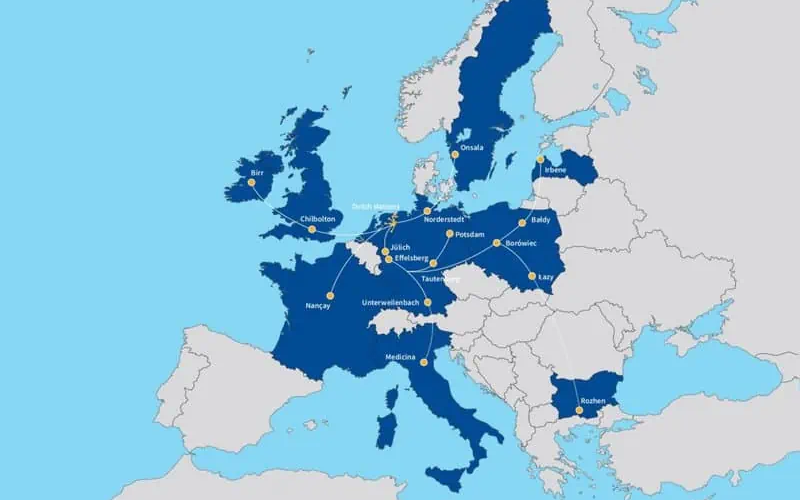
In January of this year, the LOFAR ERIC consortium (Low Frequency Array European Research Infrastructure Consortium) officially began its activities. Poland is one of the six founding members.
LOFAR is the largest system of radio telescopes in the world, located in various parts of Europe (including the Netherlands, Germany, Poland, and Sweden). The origins of this project date back to the 1990s. The formal establishment of national cooperation for Poland's participation in LOFAR took place in 2007 with the creation of the POLFAR consortium, which includes 9 scientific institutions - among them the University of Zielona Góra. Since then, the Institute of Astronomy named after Prof. Janusz Gil of the University of Zielona Góra has been conducting research using the European network of LOFAR radio telescopes as a member of POLFAR. Currently, the system consists of 52 stations connected by a very fast internet link spread across the entire continent. In addition to working within the network, this system also allows for observations in so-called local time, where once a week, for 48 hours, these stations can be used for observations by local teams. Astronomers from the Institute of Astronomy of the University of Zielona Góra use one of the Polish stations in real time, located in Łazy near Krakow (owned by the Jagiellonian University). Thanks to the system installed in the UZ Computer Center, the signal from the radio telescope is directly transmitted to the Computer Center via a dedicated internet network, where it is recorded and analyzed. The main topic of the research being conducted is radio pulsar astrophysics.
Currently, the LOFAR project has entered the next phase of development through the establishment of the European consortium LOFAR ERIC (European Research Infrastructure Consortium), where Poland is one of the founding members.
For more information: www.gov.pl.
Image: Map of the European LOFAR system. Image from the website: www.astron.nl.


